I love designing adventures! If you’re like me, there’s nothing better than creating a world with words, imagining a maelstrom of conflicts and possibilities into which an unsuspecting group of characters can be thrust. As the words tumble onto the page, the excitement of delivering a great game experience for the players leads me to a deluge of questions and doubts: will this adventure challenge them, delight them, make them think, make them feel, or otherwise deliver on the goals that I set?
Creating an adventure can be one of the greatest joys for a D&D fan, but it can also be challenging and frustrating. With so many great published adventures available, a DM can run campaigns for years and never once have to do more than make a few tweaks. However, seeing the players react to a scenario that you pulled from your own imagination can produce a rush like no other.
Fighting through the struggles of the creative process can be treacherous and frustrating, but the challenge is not insurmountable. I hope that what follows—in this article and in future ones—is a guided tour of the adventure-creation process. I want to walk with you along this path, because I have trod it many times myself, helping others see the wonderful sights and navigate the hidden pitfalls. More importantly, each time I take the journey, I learn something new myself. This is the first part of a much larger series, one which will lay the groundwork for all future installments.
Your Humble Guide
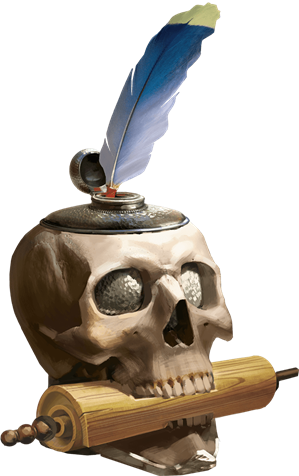 I’ve been running D&D games for almost 40 years, and creating my own adventures for the duration. I’ve been a professional adventure designer for the past 20 years, working for Wizards of the Coast and other RPG companies. If you count my experience being a writer, editor, producer, and administrator for organized-play campaigns like D&D Adventurers League, Living Forgotten Realms, Xen’drik Expeditions, and Living Greyhawk, you could say that I’ve written or been a DM for tens or even hundreds of thousands of players.
I’ve been running D&D games for almost 40 years, and creating my own adventures for the duration. I’ve been a professional adventure designer for the past 20 years, working for Wizards of the Coast and other RPG companies. If you count my experience being a writer, editor, producer, and administrator for organized-play campaigns like D&D Adventurers League, Living Forgotten Realms, Xen’drik Expeditions, and Living Greyhawk, you could say that I’ve written or been a DM for tens or even hundreds of thousands of players.
Those experiences have taught me a great deal about the game, the people who play it, and the process of creating within it. Much of what I’ve learned has come at the expense of getting things wrong. Many times over! Whether I am writing or designing or developing or editing, however, I am always looking to learn the next lesson, hoping to find the new nugget of truth and wisdom that I can carry forward into my next project.
And that’s what brings me to this point today. The fine folks at D&D Beyond asked me if I would be interested in writing a series of articles on adventure design. As I began to outline what would go into such a series, the inestimable Todd Kenreck had a brilliant idea: instead of just talking about how to create an adventure, why not actually create one, step-by-step and piece-by-piece, as I talk about each of the topics.
And so, intrepid adventure designers, that is what we’re going to do! Through the next several articles, I’ll discuss components of adventure design, and along the way we will create an adventure together. I’ll bring up topics and set us on the path, using comments from readers to guide later parts of the series. When we are finished, we’ll have a good strong outline, and maybe even a few complete encounters, from an adventure.
Charting the Course
The most important aspect of adventure design to remember—and to embrace—is that constraints on design are not antithetical to creativity. Self-constrained design is, in a nutshell, the crux of creativity. With approximately 200,000 current or obsolete words in the English language, and even more words when you throw game terms and other fictional fantasy elements into the mix, you want to do everything in your power to gracefully and elegantly limit your choices while not harming the aesthetic or functional value of your work product. That is best accomplished by constraining yourself.
In RPG adventure design, that self-constraint can take many forms. First, you can work within the time-tested and effective structures that have come before. For example, all adventures generally have a few particular sections that appear somewhere in the text. The names and locations of these sections may vary from product to product, but they all contain similar vital information. Adventure Background is one example. In the Adventure Background, we know we are going to provide the reader—and ostensibly the DM who is running the adventure—important information regarding what happened before the action of the adventure takes place. (We’ll talk more about the best way to handle Adventure Backgrounds in a later article.)
Another way to constrain the scope of your work in adventure design is to pick a theme or two that can act as a focus for your efforts. Think of these themes as “creativity magnets,” which can draw ideas out of your mind and onto the page, always driving you in a particular direction. These themes can steer the plot of an adventure, but they are much more powerful that just story beats or plot points. For example, in an adventure I wrote called Defiance in Phlan, one of the important themes was dragons. Yet a dragon does not appear in the adventure at all.
What kept my momentum moving forward during the design of that adventure were draconic themes and details. If I was ever stuck for a detail or a direction, I just focused my mind on dragons, and inevitably something came to me. Because I was focused on that one motif, what came to mind fit nicely with other details, creating a more coherent mosaic from the disparate pieces. Did I need to describe a statue? It was a dragon statue. Did I need a color? It could correspond to a chromatic dragon. Did an NPC need details? She was a merchant who dealt in dragon artifacts.
Of course, the most powerful and useful constraint is the oft-mentioned but sometimes-scorned outline. If you outline your adventure, you remove so much stress and friction from those mental gears, freeing them up to move immediately to the details of your creation. The brilliant part of outlines? They can be malleable! Once you get deep into the word mines, you might strike a completely different vein of gold. It’s fine to scrap the old outline and follow that new path, because your new ideas already have constraints of their own, which allow your easy access to the story that unfolds before you.
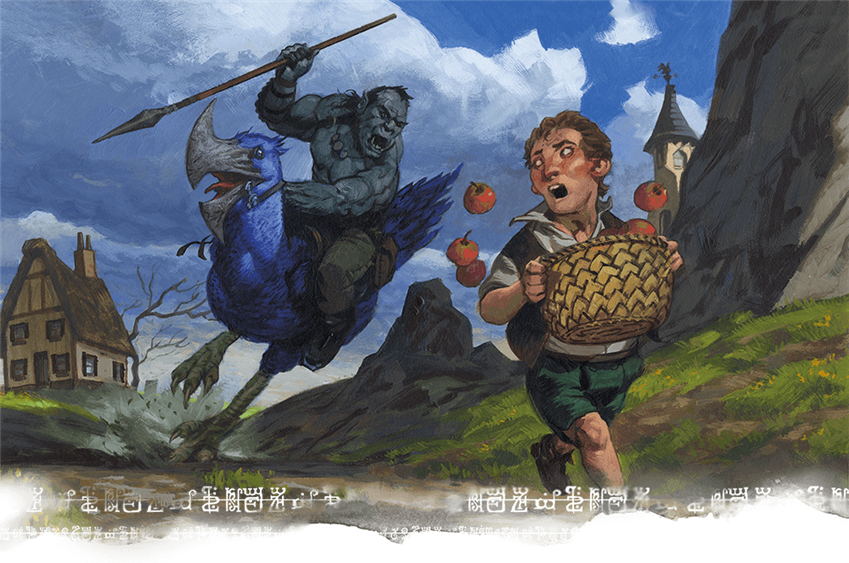
Accept Your Own Gifts
That vein of gold I mentioned above is another aspect of the creative process that bears mentioning early (and often). As we create, new pathways in our brain open up to us. We make connections. We get inspired.
A writing teacher from my past called these writerly inspirations “gifts to yourself.” You might be writing along and suddenly you have a mental flash. This could be a character, or an idea for a later encounter, or even just a word. Don’t ignore those flashes. Make a note of them somewhere that you can return to: an index card, a sticky note, a separate file, or whatever works for you that doesn’t involve too much time or effort. Then quickly get back and finish your original thought. When you reach a point where your current reservoir of writing taps itself out, go back to your notes and examine your gifts. Figure out why you might have had that flash of inspiration, and, more importantly, ruminate on how those new pieces fit into what you are working on.
Those gifts may come because your mind has already chosen a theme, or has fixated upon a new theme, and you didn’t realize it until the words accidentally appeared in your mind, or even on the page. Your subconscious mind is always working on a different level, and at a different pace, than your conscious one. These ideas may help you during your initial design, or they may be something that informs and instructs your revisions of your work. They may also solve a problem that you were having with a different part of your adventure.
Recognize Your Strengths
Unless you possess da Vinci-like genius exhibited by only a handful of people (e.g. Christopher Perkins and Jeremy Crawford), you likely have strengths and weaknesses in any project you undertake. Adventure design taps a variety of skills, ranging from writing descriptions to doing math to drawing maps, and many other tasks as well. Figure out what you are good at, and more importantly, what part of the process is most natural to you. Creating maps or other art can be difficult, but progress begets progress. If you are working on something that is not easy for you, and you cannot push through some barrier you face, move back to tackle something that is easy for you, and find a groove there. The forward progress in an entirely different area can sometimes clear away mental barriers, or give you some gifts that you can take to the task that is harder.
For me, mapping is terribly difficult. I don’t have a steady hand. My brain does not process spatial relationships well. Writing a typical adventure tends to result in dozens of crumpled sheets of graph paper littering the floor around my desk. I do, however, love to imagine scenes and put them into words. When I reach a frustration point with my mapping, I stop and attempt to use words to describe the rooms I am trying to draw. What’s in them? What are the creatures in the room doing? What features would adventurers first notice?
When I get those details painted on the page in words, it gives me the focus (and quite honestly, the courage) to go back to the graph paper and reengage the stubborn part of my brain that tries to draw a 10-foot by 10-foot room that is somehow supposed to contain seven Large-sized creatures.
I have heard many other content creators talk about this concept in other ways. Many creators love the math of adventure design: how many creatures of a particular challenge rating are needed to make this encounter hard or that encounter deadly? What creature’s ability, when paired with another creature’s abilities, add a little more spice to a fight? How much or what kinds of treasure will excite a group of players without unbalancing the campaign? These questions require a different cognitive process than, say, describing an NPC or creating a puzzle. Yet these processes can inform each other, unsticking a stubborn mental cog.
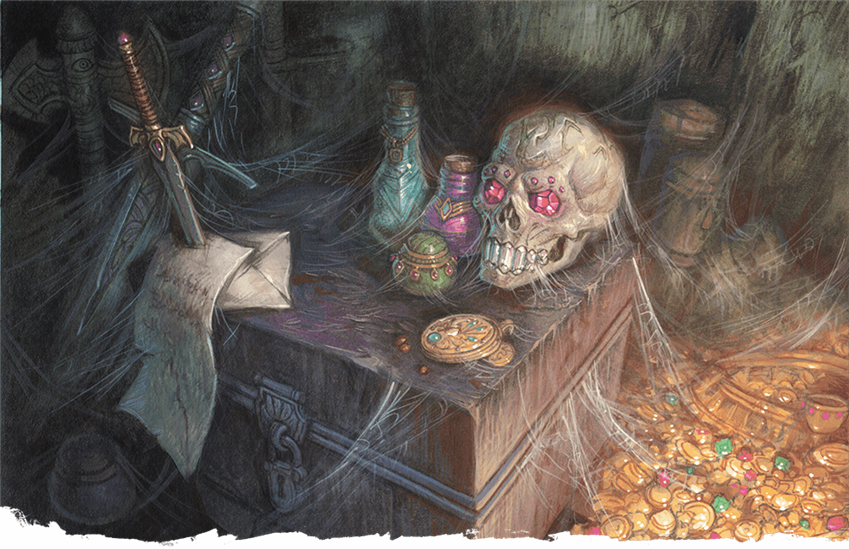
Whither from Here?
I hope the discussion so far has resonated with you, whether you want to be an adventure designer, DM, or just want to know a little more about the hobby that we love. Over the next few weeks, we’ll look at discrete aspects of game and adventure design, while at the same time putting those lessons into practice, creating pieces of an adventure that will come together into a whole by the end.
Speaking of outlines, here is a sneak peek at what topics we’ll be discussing over the course of the series. Since I hope to keep the discussion organic and flexible, there is always a chance to topics will be added, some may be combined into a single topic, or a few might be deleted entirely. But such is outlining!
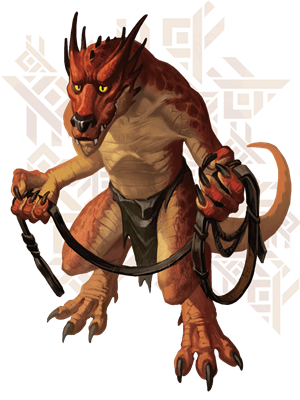
Frameworks for Adventures
- Creating an outline for an adventure, thinking about the presentation of the material in terms of the adventure scope, adventure length, adventure audience, its placement with a large campaign (or not), and more.
Plot Hooks and Opening Scenes
- An in-depth look at how to craft and implement adventure plots hooks and the opening scenes of adventures.
- Common mistakes that designers make when introducing an adventure.
- How to leverage existing game elements like backgrounds or factions to make hooks work better in an adventure.
Encounters and the Three Pillars
- A look at encounters as the building blocks of adventures.
- How to put encounters together, link them, and fit within the frameworks discussed in the previous article.
- How encounters relate to the three pillars of play: roleplaying, exploration, and combat.
- Working with the new Encounter Builder release for D&D Beyond to make it work for people who use the platform!
Boxed Text
- Dissecting boxed text, looking at how to write it and how not to write it.
- When it’s needed and when it’s not.
- Address the heated debate in design circles about whether it is needed at all!
- Discussion on details of setting, and how to find the right mix of putting in fun, flavorful, relevant details without overwhelming the DM.
Encounter Flow
- Examine the art and the craft of putting together encounters in a way that leads to organic, fun, and challenging game play.
- Touch upon the concept of story beats, and how to use different kinds of beats to keep the players happy and engaged.
- A general discussion of narrative structure, and the concepts of short and long rests as a narrative device as well as a game mechanic.
Rewards in Adventures
- How to creating adventures with rewards in mind: experience points, milestones, wealth, magic items, levels, and other kinds of rewards.
- Highlight the risks inherent in giving out too many rewards to soon, how to pace yourself, and alternate rewards that players will love that won’t unbalance your game.
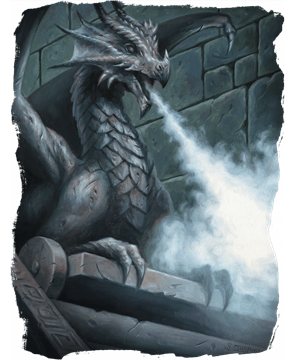
Challenges, Resolutions, and Consequences
- How to create challenges with the tools a DM has at hand: monsters, traps, hazards, obstacles, puzzles, and character choices.
- Look at how to allow different methods of resolution, and determining consequences for success and failure of those differing methods.
Thinking Like a D&D Designer
- A look at what it means to create D&D content, specifically adventures, in the larger sphere of the hobby.
- It provides tips on good writing habits, ways to make better use of your design time, and steps you can take to up your design skills.
Proofreading, Playtesting, and Publication
- Illuminate the big steps necessary in going from writing for yourself to writing for an audience.
- Cover the concepts of playtesting with outside sources, as well as polishing the piece, getting maps and art, and thinking about the content from a marketing perspective.
Homework
The next article begins our adventure design in earnest, but I need your feedback! In the comments below, talk about your experiences with adventure design, whether for your own home game or for publication. What themes have you used to constrain your design? What gifts have you left yourself that heightened the power of your design? How do you tackle designing an adventure when the blank page stares back at you?
 Shawn Merwin's professional design, development, and editing work in D&D has spanned 20 years and over 4 million words of content, ranging from third to fifth edition. His most recent credits include the Acquisitions Incorporated book, Baldur’s Gate: Descent into Avernus, and Storm Lord’s Wrath. He is also the Resource Manager for the D&D Adventurers League’s Eberron: Oracle of War campaign. Shawn hosts a weekly D&D podcast called Down with D&D, and he holds an MFA in Creative Writing from Vermont College of Fine Arts. You can follow his ramblings and musing on Twitter at @shawnmerwin.
Shawn Merwin's professional design, development, and editing work in D&D has spanned 20 years and over 4 million words of content, ranging from third to fifth edition. His most recent credits include the Acquisitions Incorporated book, Baldur’s Gate: Descent into Avernus, and Storm Lord’s Wrath. He is also the Resource Manager for the D&D Adventurers League’s Eberron: Oracle of War campaign. Shawn hosts a weekly D&D podcast called Down with D&D, and he holds an MFA in Creative Writing from Vermont College of Fine Arts. You can follow his ramblings and musing on Twitter at @shawnmerwin.








-
View User Profile
-
Send Message
Posted Sep 24, 2019Hey scimitar, I really like your hook about the pirate attack, but maybe think about giving the characters a carrot about the plot - maybe let your pc find out the pirates are the ones they want, and maybe they have a small encounter where they find they are woefully underprepared to take the group on?? Maybe then they feel the need to seek out the alchemist pirate to gain an advantage on the pirates?
Hope this helps!
-
View User Profile
-
Send Message
Posted Sep 24, 2019This series could not come at a better time. I have had the idea for a while to make create an adventure base around the music of the band Queen. I have the opportunity a DM at my local game shop taking to step in and run a few session in the next few weeks to try my hand at adventure writing and preparing this Adventurer. Set in the dictatorial Kingdom of Murcury where the Big Bad is the Killer Queen herself I already have a rough outline. I'm imagining a renaissance/ medieval on the cusp to industrial revolution vibe.
Chapter 1: Welcome to Murcury
Chapter 2
Chapter 3
I'm excited to see where this series of articles takes me and what other people are doing with it too!!
Can't wait and good luck to you all
-
View User Profile
-
Send Message
Posted Sep 24, 2019I tried an adventure in Eberron, but my hooks did not draw the PC's in enough and the campaign died session 1.
-
View User Profile
-
Send Message
Posted Sep 24, 2019Too bad, it happens to the best of us
-
View User Profile
-
Send Message
Posted Sep 24, 2019I have actually tried and failed to write my own adventures so this series is going to be a MUST READ i think. Looking forward to how it pans out.
A look at examples from pop culture and history could be fun in terms of creativity ideas for those making adventures, it is always interesting to hear what people use as inspiration.
-
View User Profile
-
Send Message
Posted Sep 24, 2019Sounds like an interesting series!
I have an ongoing campaign, my first, that is running quite well, and we are all having a lot of fun. I use this first campaign as a learning experience on what is working and what is not, so everything is still quite new for me. This series will help me a lot!
While the ongoing campaign is running, I am working on my hobby side-project that might one day spawn my future encounters. My themes for that setting is technology versus divinity, with the age of exploration as a focusing point, although I didn't think of it as such at first, but that's what I am working with. It feels good that I can play in my current campaign and still find time to work on details for my next one - so I can devote all the love and attention into the project as needed, making it an outside in project, but that's alright since I got the time for it.
This adventure and campaign that I am running right now is made as we go along, with a few important outlines and an end point in mind, that is of course subject to change depending on player actions. I like to write down details about possible encounters in the direction I predict the party will go for the next session (easy enough when they are travelling on a road), and I go into way too much detail in those session notes. It's not because I need it, because 70% of my sessions become improv anyway, but it starts my creative process before a session. I know I want to introduce an NPC, for example, so I write down a couple of lines this character would likely say, what their motive is, maybe even their stats, but I rarely use it when we actually play. It just sorta kickstarts my brain when I read it before a session :)
Anyhow, looking forward to more articles!
-
View User Profile
-
Send Message
Posted Sep 24, 2019I'm a first time DM, but a long time RPG player. I'm using he setting and stories/backgrounds from from the world of Final Fantasy as a campaign background. I've found myself though wanting to steer away from that world and incorporate it more into the D&D world. Has anyone else who's home-brewed a campaign struggled with that?
-
View User Profile
-
Send Message
Posted Sep 24, 2019Sketched out a modest opening arc where the PCs would come into conflict with the local representative of the dominant Church. Session three, they all left the district to sell alien lugnuts to an apocalypse cult.
Them's the breaks, sometimes.
-
View User Profile
-
Send Message
Posted Sep 24, 2019I look forward to this series. This article was a great read. I'm a die-hard homebrewer, and my use for modules and published adventures is a place to mine for ideas, creatures, treasure, and lore. I'm not sure I've ever run a module right out of a book. I've been a player since 1993 and have GM'd off and on in a variety of games ever since.
As for me, my adventures grow organically as I play in a campaign and they are not really separable from the campaign itself without some retooling to make them general enough. They are heavily influenced by character backstory and personality. That's not to say that all the adventures, or even most of them, are tied directly to a PC backstory element, but I'll use the themes and motifs of character backstory to inform and flavor them for the characters. A disenfranchised exiled noble PC may find a necromancer and his minions occupying the ruined house of a long-extinct (and unrelated) noble family. Goblins may have killed a caravan, leaving few survivors, including some newly orphaned children, which will affect the PC with an orphan background differently from the others. A very brash and brave young fighter may stumble upon the corpse of a man a few years younger than himself, whose own brash bravery clearly got him killed. These elements are not usually integral to the overarching plot, but they resonate with the characters. The themes usually touch on those of the campaign itself. One of my most successful campaigns was heavily redemption themed. The motifs tend to point to the overall plot and are often very subtle hints as to the nature of the big threats in the world. If the campaign is focused on dragons as threats, then draconic and dragon-related themes will pop up frequently. If the big bads are mainly devils or undead, then imagery about the nine hells or bones and death will be spotted here and there in the background in thematically appropriate places.
-
View User Profile
-
Send Message
Posted Sep 24, 2019I'm in the throws of learning adventure design. I wrote my first CCC this year. It has been played at two small conventions. I'm now in the last edits before posting to the DMs Guild. I nearly threw in the towell after writing it for AL's season 7 format only to have the format change for season 8. I ended up shoehorning in the story and it suffered for it.
Themes were not chosen on purpose but looking back at the work they were there. Themes included Faustian deals and empathy. The most design heightening gift that Ieft to myself was my mantra of getting the work done no matter the obstacles. Going to the library every morning to write for a least an hour every morning was also a gift to myself.
With a blank screen is staring at me I look for inspiration. What troubles me in the world, is there a piece of music that is fetching? What did Chris and Shawn talk about on Down with DnD this week? The Encounter and Adventure design episodes were eye opening to say the least.
-
View User Profile
-
Send Message
Posted Sep 24, 2019I sort of treat my adventures like a video game, in which I have the world and its events, and I throw the players into it and figure out the consequences of their actions.
-
View User Profile
-
Send Message
Posted Sep 24, 2019I've only ran a one shot and then a campaign of Strahd. One thing i was confused about was that the Strahd Publication is broken into chapters, but being a new DM it was hard knowing how to order them because they aren't in chronological order or by Character Level. Of course depending on what the characters do the order doesn't even matter. This also doesn't matter if I'm writing the campaign or adventure myself bc I'm in control of where chapters are broken out. So I guess my main thing is balancing encounters and how to plan for the unplannable.
-
View User Profile
-
Send Message
Posted Sep 24, 2019Something I found I like to do is making an overarching plot but lace my character’s stories into it so they feel more involved in what’s happening. I’ve had troubles with figuring out balancing cus I have a shockingly large party of 8-9 depending on the day and I would love to hear about other ways to reward the party.
-
View User Profile
-
Send Message
Posted Sep 24, 2019Welp, now that you've given me a sheer heart attack, the show must go on. Good work.
-
View User Profile
-
Send Message
Posted Sep 24, 2019When writing for my tables, I start with a theme. For example, last year, I wanted to do a Halloween one shot, so I chose a monster to focus on and a story style. In this case: werewolf and suspenseful murder mystery.
Then I came up with a setting by taking inspiration from New England small villages and Gilmore Girls to build the town and shop npcs.
This year, we are going back to the same town at their annual harvest festival and will find something new, related to last year's adventure. No spoilers, as my players read dndbeyond.
-
View User Profile
-
Send Message
Posted Sep 24, 2019Before a few months ago, all of my "design" experience was in setting up more interesting play with friends as a kid. That mostly stopped when video games began to really dominate youth entertainment. I've been wanting to get into TTRPGs for years now, and just got tired of waiting for others to come up with a setting and adventure a group would commit to, so I started a setting for myself to see if I could. It has been one of the more rewarding decisions I have ever made and there is still no game session in sight yet. Part of the reward has been finding more fun and fulfilling uses for skills I had developed for other uses - many of which you have alluded to already. So far, the primary themes of the first adventure I want to design are history community and truth: how difficult they can be to find and defend.
So far, the biggest gift to myself has been creating an entire world map first. It has both helped constrain my later efforts without creating any hard boundaries and gives on-going inspiration - I doubt I will ever truly fill up this whole globe of mine. So, now if I am stuck, I can return to my map and grand outline, or other standard materials e.g. The Monster Manual, and simply go from there - just seeing it as a player and asking "What's THERE?" - until some potential conflicts come out. From there locations, characters, and encounters usually flow quite freely. I'm saving most of the math-level stuff and finer details for when I have actual players to prepare the adventures for.
P.S. I created an account in order to follow this series. Consider me hooked for this meta-adventure!
-
View User Profile
-
Send Message
Posted Sep 24, 2019That's really great! It's important that you know your group, so know you know that they enjoy challenging fights and can include more
-
View User Profile
-
Send Message
Posted Sep 24, 2019I tend to have long campaigns, so my constraints seem to come from the world itself. In my current campaign, the players start in areas that very limited access to outside influence, so coming up with adventures in that context proved interesting. For any encounter, there had to be a reason that the creatures were there. If they were native to the area, how did they get there to begin with. If they weren’t native, why are they there now and what clues or information about the outside world do they provide?
One of the biggest gifts is that I allow a lot of room for my players to have input. Especially when creating their characters. I actively use bits and pieces they come up with to include in the campaign. Even though the campaign world is set, little nuggets they provide will work their way into the world. As far as personal gifts, I provide myself with lots of time to think and very little time to write. I ponder and chew over ideas and scenarios for days on end, writing notes on ideas and adjusting them as needed. And then, a day or two before the adventure is needed, I blast it all out on paper. I think providing ample time to think is a great gift.
As far as tackling a blank page, see above. I usually already have the idea in my head and can get it on paper fast. I’m sure this is different for professional adventure writers, but I have the benefit of going back through my campaign wiki and pulling out bits of information and loose ends that can inspire new ideas.
Beaumont
-
View User Profile
-
Send Message
Posted Sep 24, 2019I'm really excited to read this series, and to have a series do this sort of deep dive into how to make an adventure! I start my first DMing experience in two days. I've got three seasoned DMs in my group--I know they'll help me out and understand growing pains, but I'm super nervous. I'll be following this series to see how I can improve.
I've approached this first adventure by figuring out what interested me first, so I want to continue it. I gave players a brief, and we iterated on characters over time. I've got their interests down, and plan on my adventure starting out with those. I've outlined each player's relationship to those interests and what an arc for them might look like, and I'm curious to see how their reactions / play can inform and better create that story. In short: I'm trying to frontload plenty of ideas for myself now to make future planning easier. Who knows how it'll go!
-
View User Profile
-
Send Message
Posted Sep 24, 2019The last time I wrote my own adventure, it was designed to introduce a group of complete newbies to D&D. So, I planned it to run a bit long because I wanted them to have some cool interaction, some investigation, an exploration phase, puzzles, a twist, a big battle, and one or two huge decisions.